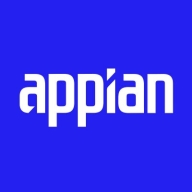

Appian and Pillir are players in the low-code application development sector. Appian offers a broader range of features, but Pillir's effective SAP integration can be particularly advantageous for businesses invested in SAP environments.
Features: Appian is recognized for its comprehensive process automation, strong analytics, and integration capabilities. It excels in offering integrated reporting tools. Pillir is notable for rapidly modernizing SAP applications and facilitating seamless integration, emphasizing SAP-specific solutions, which appeals to businesses using SAP.
Ease of Deployment and Customer Service: Appian's deployment is straightforward, with renowned customer service ensuring smooth onboarding for various business sizes. Pillir's cloud-based deployment offers quick implementation in SAP settings, providing flexibility, though its customer service might not match Appian's extensive support.
Pricing and ROI: Appian's pricing is flexible, enhancing ROI, with options that can adapt to different budgetary needs. Pillir, while also offering competitive pricing, stands out by potentially reducing operational costs through effective SAP integration, granting better ROI for SAP-focused companies.
| Product | Market Share (%) |
|---|---|
| Appian | 5.8% |
| Pillir | 0.5% |
| Other | 93.7% |

| Company Size | Count |
|---|---|
| Small Business | 20 |
| Midsize Enterprise | 9 |
| Large Enterprise | 42 |
Appian is a unified low-code platform and solution used by businesses to build enterprise applications and workflows. This product adapts to the needs of clients and the technologies they are already using to combine their data in a single workflow and maximize resources. The platform has four main components through which it transforms the work process for companies of various sizes. They are:
Appian is utilized across a diverse set of industries, including automotive and manufacturing, energy and utilities, education, financial services, telecom and media, transportation, retail, insurance, healthcare, and life sciences. The most frequent use cases of Appian are customer journey, governance, risk and compliance, operational efficiency, supply chain, distributed order management, and environmental, social, and governance (ESG) management.
Appian Features
Appian has various features that allow users to create solutions for their businesses. These features can be separated into a few groups according to function, including automation, low-code application development, and integrations and data. Some of the most frequently used features of Appian include:
Appian Benefits
The benefits of using Appian include:
Reviews from Real Users
A practice leader - digital process automation at a computer software company values Appian highly because the product is easy to develop, low-code, and has a good user interface.
Alan G., an advisory board member at Codecon VR, Appian offers a clear application life cycle, easy to learn documentation, and comes with a fundamentals course.
Pillir is the developer of a low-code/no-code, cloud-native platform that enables organizations to develop mission-critical apps 20 times faster than traditional methods, leveraging the power of SAP’s digital core from any device, with or without connectivity. Pillir’s platform automatically converts legacy custom business processes to modern cloud-native applications, available on the web and via any mobile device. It enables organizations at any stage of their SAP journey to accelerate their digital transformation, enabling innovation at the edge while maintaining a clean SAP digital core.
We monitor all Rapid Application Development Software reviews to prevent fraudulent reviews and keep review quality high. We do not post reviews by company employees or direct competitors. We validate each review for authenticity via cross-reference with LinkedIn, and personal follow-up with the reviewer when necessary.